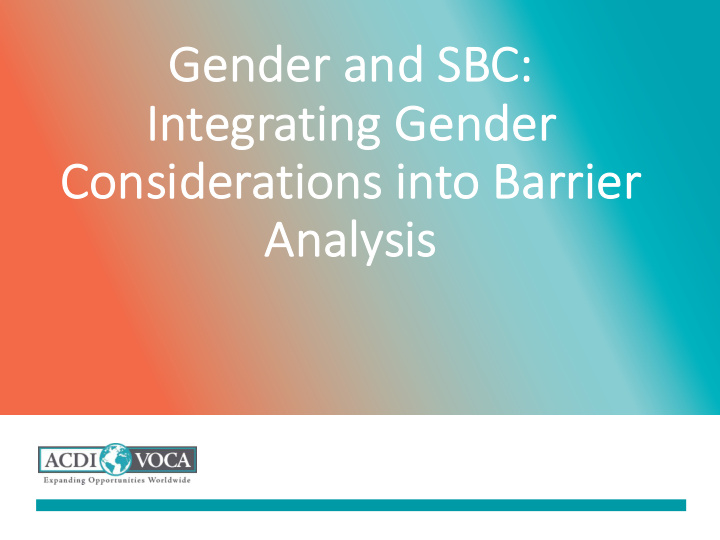



Ge Gender r and SB SBC: In Integr egratin ing G g Gen ender er Con Consi siderati tion ons s into o Ba Barri rrier r An Analysis
1. Gender in Barrier Analysis 2. Barrier Analysis Methodology 3. Gender-specific barrier analysis 4. Sex-disaggregated barrier analysis
1. Gender in Barrier Analysis
2. Barrier Analysis Methodology • Specific behavior • 45 doer non-doer analysis • Statistical significance
3. Gender specific barrier analysis
3. Gender Specific Barrier analysis Key barriers Key motivators Perception that: Perception that: It is not possible to do the behavior Family income will increase if wife • • There are NO advantages to leaves home • women leaving the household More money for food, • • Men’s household work (cooking, agriculture, and children’s looking after children, looking after marriage livestock) will increase Family financial burdens will be • Most people do not approve, lighter (household resilience will • especially family elders, and improve) neighbors • There are NO disadvantages Most people approve, specifically • neighbors
4. Sex-disaggregated Barrier Analysis
4. Sex-disaggregated barrier analysis Key barriers Key motivators Barrier Motivator • No milk supply at house • Have own milking cow • No milking-cow at house • Milk available in market and neighbor’s • No habit of taking milk/milk-made house food • Habit of drinking milk Men • No habit of taking milk during • Milk is a nutritious food with high food sickness value • Higher income makes it affordable • No milk supply at house • Milk is good for health, nutritious and • No milking-cow at house gives strength • Available at neighbor’s house and milk Women collector • Affordable/economic considering health benefit
We envision a world in which people are empowered to succeed in the global economy. www.acdivoca.org www.asintl.org
Recommend
More recommend